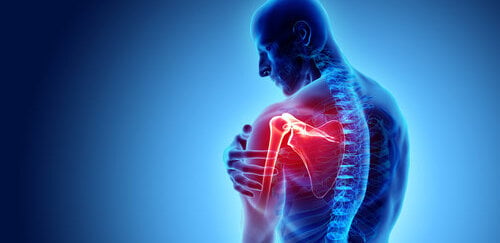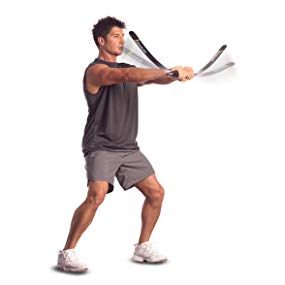
Stiffness gets a bad name. It is generally thought of as meaning inflexible and at risk for injury during exercise. But being stiff at the right time is crucial to protect one from injuries like an ACL tear, as well as help one’s ability to stop quickly and change directions. The great thing about stiffness is that you can hear its rhythm, such as the quick, explosive sound of a sprinter striking the ground while skipping. However, this rhythm is even more crucial in upper body movements like throwing or hitting a ball, because the shoulder is the most mobile joint in the body. Though a lack of mobility or range of motion is often thought to be the culprit for upper body injuries and pain, increasing range of motion isn’t enough. Similar to structures in the lower body, the upper body needs to have sufficient strength and rhythm, including stiffness to allow for proper function.
The scientific term for this is scapula-humeral rhythm, the coordinated action of the shoulder joint during arm movement. This rhythm allows the shoulder to move through its full range of movement, while keeping the arm centered in the ball and socket joint.
A 2007 study from the Brain Tree Rehabilitation Hospital along with the University of Connecticut, used a unique rehabilitation tool, the body blade, which requires you to generate oscillatory movements of the upper extremity. The authors found the blade helped shoulder instability, specifically by strengthening the muscles that keep your arm in the joint, as well as by improving the response to rapid positional changes. So, just like a sprinter skipping, this tool requires rhythm, the rapid alternation from reciprocal inhibition to co-activation. A more recent 2016 study found that this need was far greater in males than females.

Reciprocal inhibition refers to the firing of the agonist muscle (the one shortening to produce movement), while simultaneously inhibiting the opposing antagonist muscle. It’s like taking your foot off the brake to drive faster. On the other hand, co-activation occurs when both of these opposing muscle groups fire in an attempt to protect the joint. Depending on the circumstances, the central nervous system (CNS) shifts between reciprocal inhibition and co-activation of antagonist muscle.
We use the body blade as a warm-up for upper body and trunk workouts, just like we sue skips before a lower body workout. If you don’t have access to a body blade, you can substitute with things like: dribbling a basketball, tossing a light medicine ball against the wall over your head, or quarter clock dribbles (shown in video below). The concept of these alternative exercises is similar to that of a body blade; rapid, oscillating movements of the shoulder complex that simultaneously teach precise moments of stiffness through movement. However, you are more limited to a certain plane with a basketball or medicine ball. Ideally, like when using the blade, you can bring your arm through all different planes and ranges of motion to teach stiffness while moving.
Just as mobility isn’t always good, stiffness isn’t always bad. The human body is a system and needs pre-requisite amounts of both of these qualities in order to function properly. Though it often gets a bad rap, stiffness (and rhythm) may just be the missing piece to allow for more efficient upper body movement!
Buteau, Josephine L et al. “Rehabilitation of a glenohumeral instability utilizing the body blade.” Physiotherapy theory and practice vol. 23,6 (2007): 333-49. doi:10.1080/09593980701247337
Escamilla, Rafael F et al. “AN ELECTROMYOGRAPHIC ANALYSIS OF THE SHOULDER COMPLEX MUSCULATURE WHILE PERFORMING EXERCISES USING THE BODYBLADE® CLASSIC AND BODYBLADE® PRO.” International journal of sports physical therapy vol. 11,2 (2016): 175-89.